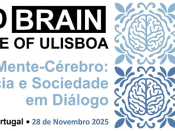Por Pablo Guerrero (LIP).
Heavy ion collisions (HICs) give access to the Quark Gluon Plasma (QGP), an extremely hot and dense phase of matter made up of deconfined partons. The heavy ion physics programs at RHIC and the LHC are devoted to making precision measurements of QGP properties, such as its collective fluid-like behavior. However, the relevant observables are reflective not only of the properties of the QGP, but also of the fluctuations that characterize the earliest stages of HICs. The description of these fluctuations requires a degree of phenomenological modeling to incorporate contributions from different dynamical mechanisms whose relative importance is not yet very clear. A further source of uncertainty is understanding the time evolution of these fluctuations in the very early preequilibrium stage. It has been proposed that a high-energy approximation of QCD called Color Glass Condensate (CGC) may provide the theoretical insight needed to reduce this uncertainty. In this presentation, I apply CGC techniques to describe quantum fluctuations originated in the wave functions of the colliding nuclei, as well as their effect over phenomenological studies of collective flow.
Transmissão via Zoom.






















